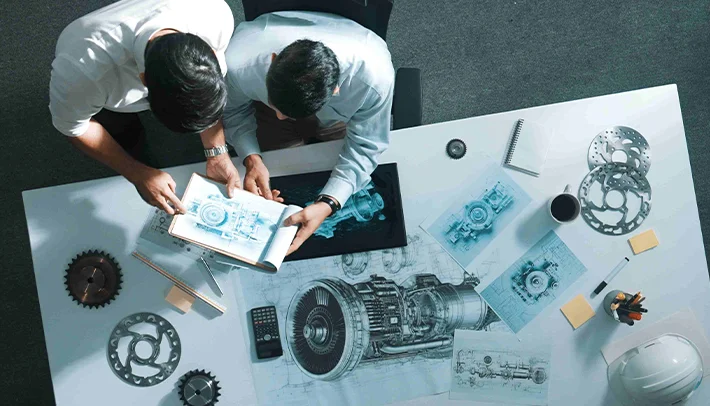Why Interdisciplinary Engineering is the Future of Problem-Solving

For curious minds at the intersection of tech & innovation. Remember the days when a mechanical engineer focused on gears and shafts, a computer scientist wrote code in isolation, and biotechnologists stuck to their petri dishes? Well, those silos are crumbling faster than your Wi-Fi during a Zoom call. Welcome to the era of interdisciplinary engineering—a world where code meets circuits, biotech meets bots, and ideas collide to create breakthroughs.
What’s the Big Deal About Interdisciplinary Engineering?
In simple language, interdisciplinary engineering is the combination of several areas of engineering and science—imagine the Avengers getting together, but with technology. In the hyperconnected, AI-powered, biotech-enhanced, robot-enabled world we live in today, no one discipline has all the answers. Complex challenges—climate change, pandemic management, renewable energy, autonomous systems—demand multidisciplinary, team-based solutions. And you know what? That's where interdisciplinary engineers excel.
Why Single-Domain Expertise Isn't Enough Anymore
Suppose you're designing a prosthetic arm.
- Mechanical engineering to create the joints and motion.
- Embedded systems and electronics to drive the actuators.
- Computer science for programming the control systems, interpreting sensor information, and perhaps training a machine learning algorithm for adaptive feedback.
- Biotech/biomedical expertise to make sure biological compatibility and interface with neural signals.
Boom! Four disciplines without even conducting your first test.
Examples of Interdisciplinary Innovation
1. Brain-Computer Interfaces (BCIs)
Neuralink, among others, is combining neuroscience, electronics, and AI to enable the brain to interface directly with computers. Not science fiction—it's signal processing meets brain waves meets real-time software.
2. Self-driving Cars
- Structural and movement mechanical systems.
- Perception electronics and sensors.
- CS and AI for decisions and navigation.
- Human factors engineering for the creation of safe, usable interactions.
You don't design a self-driving car with one degree—you design it with a team proficient across disciplines.
3. Sustainable AgriTech
- IoT and sensor technology to track crops.
- Machine learning to make growth more efficient and minimize waste.
- Biotech to bioengineer better seeds.
- Mechanical engineering for drones and robotics.
The New Skill Stack for Engineers
The future engineer is not merely T-shaped (deep knowledge in one, shallow knowledge in others). They're comb-shaped—deep knowledge in several, and the desire to learn more.
Here's what's trending in engineering courses and job ads:
| Domain | Why It Matters |
|---|---|
| CS & AI | Everything is becoming data-driven. Even tractors now run on algorithms. |
| Electronics & Embedded Systems | Vital for IoT, medical devices, automation—you name it. |
| Biotech & Bioengineering | Health tech, personalized medicine, synthetic biology—the next frontier. |
| Mechanical & Mechatronics | Still the backbone of every product that moves, shakes, or makes coffee. |
Interdisciplinary Thinking = Improved Problem Solving
Interdisciplinary engineers aren't technical Swiss Army knives—they're better thinkers. They:
- View problems from many angles.
- Communicate between teams.
- Come up with innovative solutions at the intersection of disciplines.
- Learn faster in an increasingly changing tech world.
In other words, they're engineers of the future, not merely of machines.
So, How Do You Get There?
Here's how to begin developing your interdisciplinary toolkit:
- Double-dip in courses – Combine CS with bioinformatics, or electrical with mechanical design.
- Hackathons & projects – Experiment with Raspberry Pi, create a robot, code an app for health diagnostics.
- Intern across industries – Seek internships that don't neatly fall into your major.
- Collaborate – Locate team members from other departments. Build together, fail together, learn together.
- Stay curious – Read outside your domain. Keep up with AI, bioengineering, renewable technology, and more.
Conclusion: Be the Bridge
The future isn't created by specialists in isolation. It's constructed by connectors—engineers who can speak across languages, biology and mechanics, code and circuits, software and systems.
So, the next time you hesitate about whether or not to take that elective in a field other than your major, or participate in that cross-disciplinary startup project—do it. The world doesn't need more tower-builders, it needs more bridge-builders.
Be curious. Be hybrid. Be human.
A mechanical thinker who codes like a CS major and still gets resistor values confused.